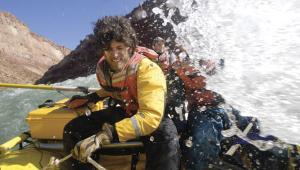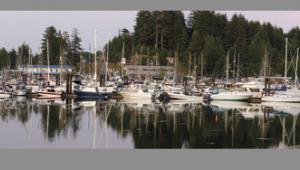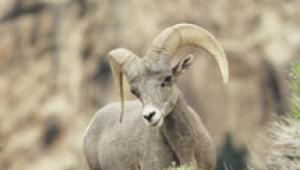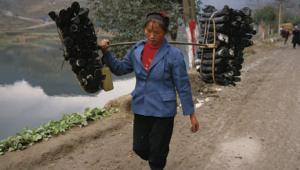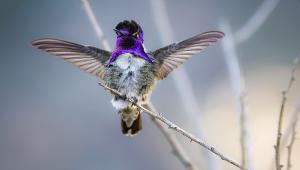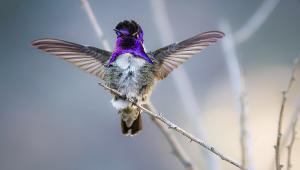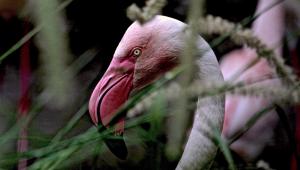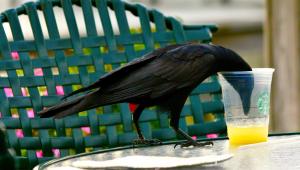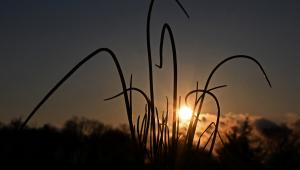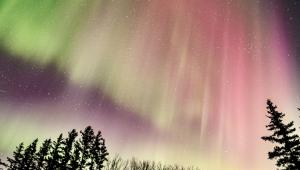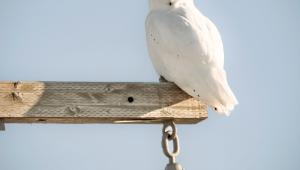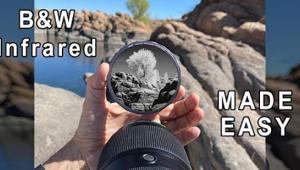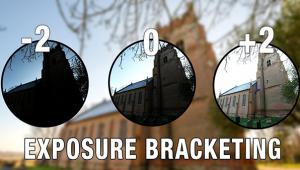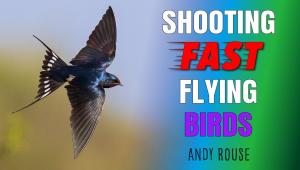Bad Trip
Fear And Loathing On The Travel Trail
| Kevin Gilbert was in a hurry. "I'm heading out for a six-week assignment," the globetrotting photographer said to me over the phone about a year ago. So we made it a fast conversation. I got the information I needed for the story I was working on, and then, because I knew he'd once photographed there, I asked, "So where are you off to? Going back to Borneo?" "Oh, no," he said. "That's one place I'm never going back to." I thought, well, that's a story I want to hear. But time was short, so I just wrote a note for the future file: "Ask Kevin about Borneo." And then I thought, I'll bet a lot of travel, nature, and adventure photographers have places they never want to revisit. It might be fun to find out what those places are and why they don't want to go back. I added "Others?" to the note. The courageous editors of this magazine okayed the story idea, and so, as the flip side to all those sweet, glowing, adjective-laden reports on photographers' favorite places, we offer five tales replete with bats, blood, belligerence, boredom, and bugs. We'll start, of course, in Borneo. Kevin Gilbert: Drop Zone In September and October of 2000 Kevin photographed the Eco-Challenge in Borneo. "The Borneo race covered hundreds of kilometers over water, through leech-infested jungles, with humidity of about 100 percent all the time," Kevin says. "There were rainstorms every afternoon, roads that were impassable during the rain and food that was€" Mystery food? "Well, no, they told us what it was. The problem was where it was. We were staying in this hotel where the rooms were out on stilts over the South China Sea. Near the kitchen area they had fish pens down in the water where they'd pull the fish out to cook for dinner. But after the first day we realized that the toilets flushed directly into the water, and the area of the sea the stuff was hitting was about 30 yards from the fish pens. So, of course, no one ate the fish. And we thought if that was the level of sanitation, we probably ought to just stick to bottled beer and Pringles; you know, anything that was sealed up tight and shipped from a first-world country." Then there was the bat cave. "One of the challenges for the contestants was climbing through this cave that was filled with bats. Stuff is falling from the roof of the cave onto us, and the ground is moving because it's alive with maggots that live on about a thousand years' worth of bat guano." The climate made everything worse. "You're sweating all the time in the heat and humidity; the cameras are covered with moisture. We were doing a lot of hiking and climbing, all the time trying to protect ourselves from leeches falling off the trees. We're wearing long-sleeve shirts, long pants, heavy boots and socks and still, walking in the jungle you'd look down and see blood oozing out of your boots because the leeches got in anyway." Taxi! Bob Krist: Street Wise "Well, the problem is that those pictures were taken under a lot of stress," says Bob, who is one of the world's leading travel photographers with countless articles and photographs and several books to his credit, including Spirit of Place: The Art of the Traveling Photographer and Secrets of Lighting on Location: A Photographer's Guide to Professional Lighting Techniques. "Jamaica is a beautiful country," he says, "and a lot of the people working in the tourism business are highly trained professionals. But out on the streets there's tremendous harassment of anyone with a camera. Jamaica is one of the few places I've been in the world where the simple act of walking down the street or through an open market--not even taking a picture, just with the camera around your neck--will not only get you glares and stares, but people will come up and threaten you. It doesn't matter if you're a tourist or a professional on assignment--if you've got a camera you're a target." And almost everyone asks for money. "I saw a fruit stand and asked the man there if I could take his picture. I told him I was a professional photographer, on assignment for a Caribbean travel magazine. He said he wanted $50. We talked, and I eventually ended up paying him $25. I gave him my card, and when I got home I sent a dupe slide to him. Then six months later, after the magazine came out, I got a letter from him. He saw his photo in the magazine, said I ripped him off and he wanted more money. He said he wanted at least 10 percent of what I got. I wrote back and told him I got $125 for the photo, and so by his calculation, he owed me money." Bob feels that it's a shame that this beautiful and interesting place has become a location for photographers to avoid. "I know at least three other travel photographers who do a lot of work in the Caribbean who will not go back to Jamaica. As for me, there were enough nasty people there to make it very unpleasant, and if I can possibly avoid it, I'm not going back." Jamaica? Say you won't. Rick Sammon: The Fire This
Time "As we walked it got darker and darker," Rick says. "Eventually we came around a turn and I saw a large fire with many people standing around. I realized it was a crematorium. Varanasi is the holiest city in the Hindu religion, and it's believed that Hindus who die in Varanasi are guaranteed a spot in heaven. So the crematoriums are busy with people who come from all over India when they feel they're close to death." Rick, a writer, lecturer, and travel and underwater photographer who is a frequent contributor to this magazine, admits to being a bit nervous, but he raised his camera and took one photo, an image in which you can see a body being tossed into the flames. "Seconds later we were surrounded by about a half-dozen very angry people, all yelling at me. Susan said, 'Get me out of here.' I shouted to our guide. He was stubborn and argued with them. There was lots of shouting and hand-waving, and all the time the angry people were forming a tighter and tighter circle around us. "We finally just walked away, following our guide. He might have given them money or promised them some on his next visit, I don't know. We just got out of there." Rick and Susan stayed in a hotel in Varanasi the next day and then took off for "some of the more peaceful places in India." Rick later learned that there had been a photographer at the same general location a week before. "He had shot a lot of film," Rick says, "but obviously he was in a less sensitive place than we were when I took the photo." Rick had no intention of offending, and was doing what a travel photographer does--take pictures. If he'd thought of it, he would have gladly offered to destroy the film. Rick says, "It's one of those events that was very scary when it was happening, but now when you look back on it€it's still very scary." A walk along the Ganges? Not in Varanasi, thanks. Daniel J. Cox: Swamp Thing For people, it's not that great. "It's all stagnant water, high temperatures, high humidity, and tons of mosquitoes," Dan says. "I'd follow the bear from early morning to late evening. Between foraging for blueberries, he'd fall asleep for long periods of time. So I spent a lot of time sitting around not doing anything other than sweating and being chewed on by mosquitoes, waiting for the bear to do something." Dan got a good number of photos of the bear sleeping, but let's face it, once you've got a few bear-sleeping pictures, that's about it for that photo opportunity. So you hang around and hope for him to do something else, like turn over or stretch or maybe decide to get up and forage. Dan doesn't categorize the swamp as a place he'd never visit again, though. He'll go only as far as saying that this particular location was "one of the more unappealing places I've had to shoot in." Hey, big guy--wake up! Gil Lopez-Espina: One Good
Tern "I was going to have three days on Petit Manan," Gil says, "but the Park Service man warned me that I should be prepared to stay some additional days because the weather out there is foul; there's usually fog or heavy mist. I figured, no problem, I'd just take some extra food and supplies. There was no refrigeration on the island, no running water, so I bought about 20 cans of tuna, lots of bottled water, and some other stuff and figured, hey, for a few days, no big deal." Gil was also told that there were two people on the island who tagged the birds for research, surveys, and studies, and that there'd be a little building where he could stay. "So with my photography gear, my sleeping bag, and my supplies, I got on the little boat and they took me out there." Inside the dilapidated building, Gil found his base of operation: an old bathtub. "I put a piece of wood on top and my sleeping bag on top of that. I didn't care, I was very enthusiastic about the whole thing." The first indication that there might be a problem came the following morning. "I get up and see this so-so sunrise, nothing special, but one of the men there said, 'Isn't that a gorgeous sunrise? It's beautiful!' and I thought, this doesn't sound right. But I didn't pay much attention. If I had, it might have occurred to me that the guy hadn't seen too many sunrises lately." That day the fog rolled in and pitched camp. Soon Gil realized that not only were sunrises rare on Petit Manan, so was the sun, period. "My three days became three weeks," Gil says. "The boat couldn't come in the fog to get me, and after a while I felt I'd put in so much time that I didn't want to quit, I had to make it count for something. Finally I got one day when the sun came out. Before and after that day--nothing but fog and mist." His supplies held out, but as far as amenities, well€"The only water I could use for washing I got by going to the back of the house and waiting for the humidity and the mist to build up and roll down the roof into a pail. And even though it wasn't that cold, I got chilled to the bone at night despite my heavy sleeping bag, not to mention visiting the outhouse in the middle of the night." Even photographing in the fog, which Gil tried a few times, was a problem. "The moisture immediately condensed on the camera and the lens." And there was one other thing. Petit Manan is also the site of an automated US Coast Guard light station with a 123-foot tall granite lighthouse. And a fog horn. "That horn went off every 15 or 20 seconds, 24 hours a day." After three weeks he'd had enough. The island had radio communication with the mainland and Gil requested that the boat come at the first break in the fog. The tern story never happened, but Gil went on to build his career and today is an award-winning, much-published wildlife photographer who also runs his own photography tour business, Fototreks. But don't worry, if you sign up with him, he won't be taking you to Petit Manan. And if you do meet Gil, it's probably not a good idea to offer him a tuna sandwich. Learn More About The Photographers; You're Invited To Visit Their Web Sites
|
- Log in or register to post comments


